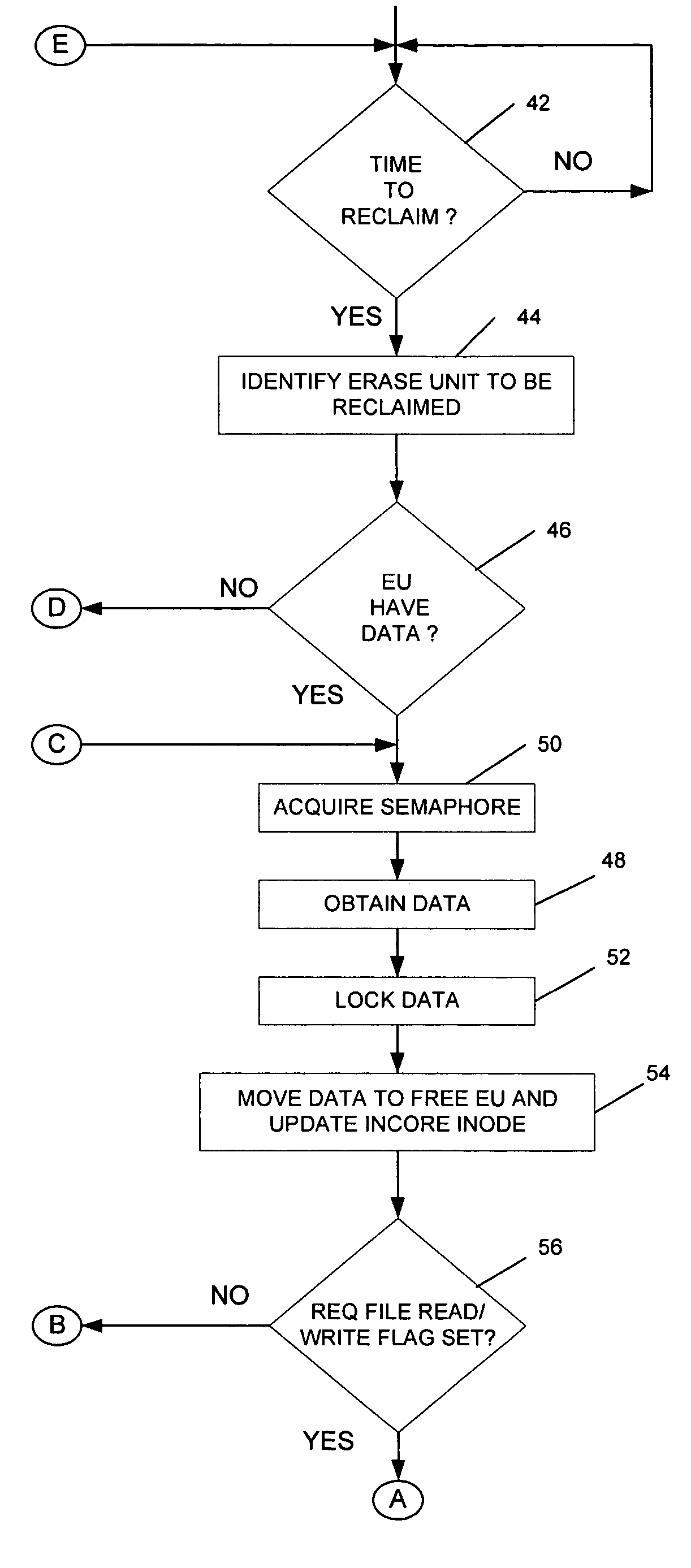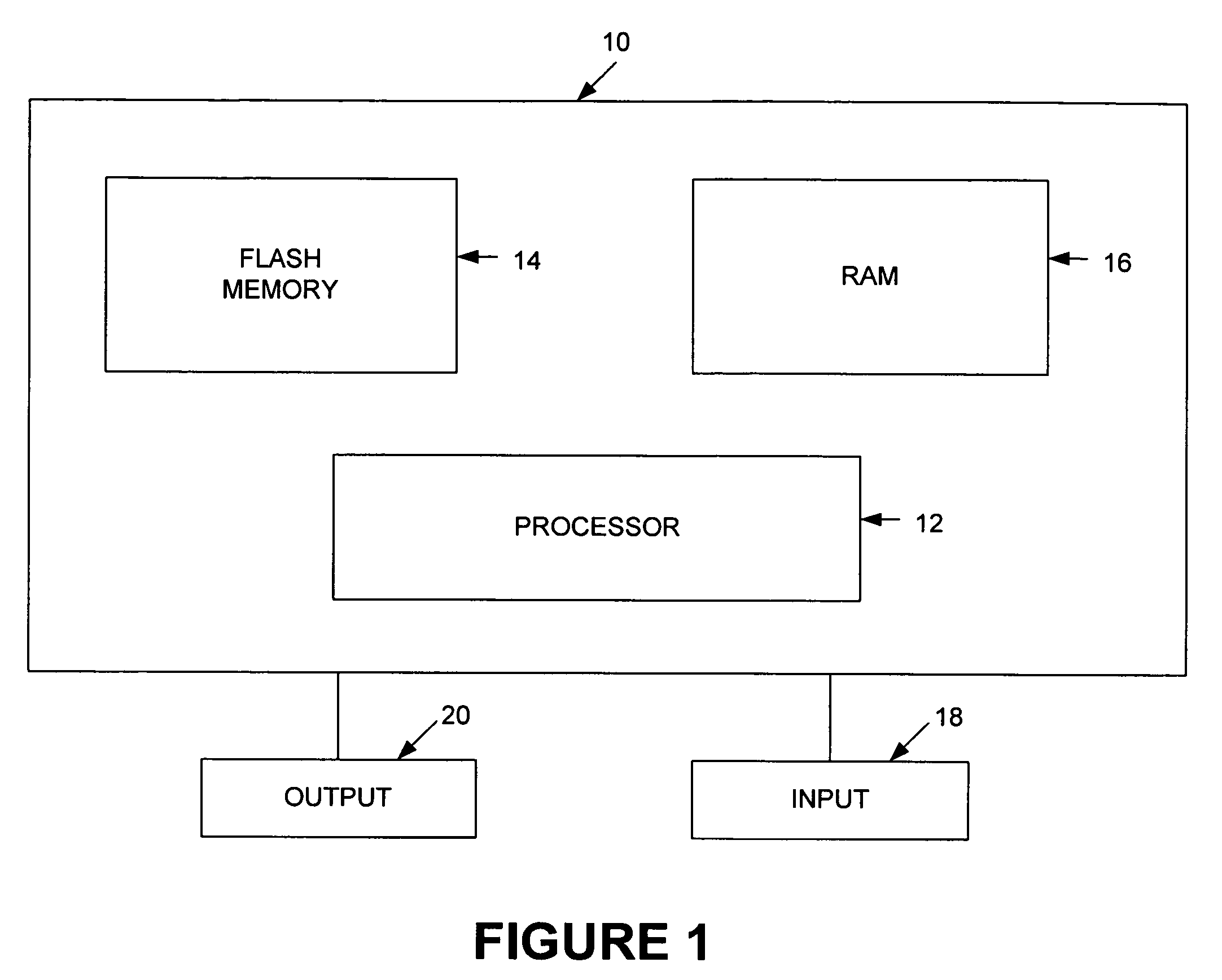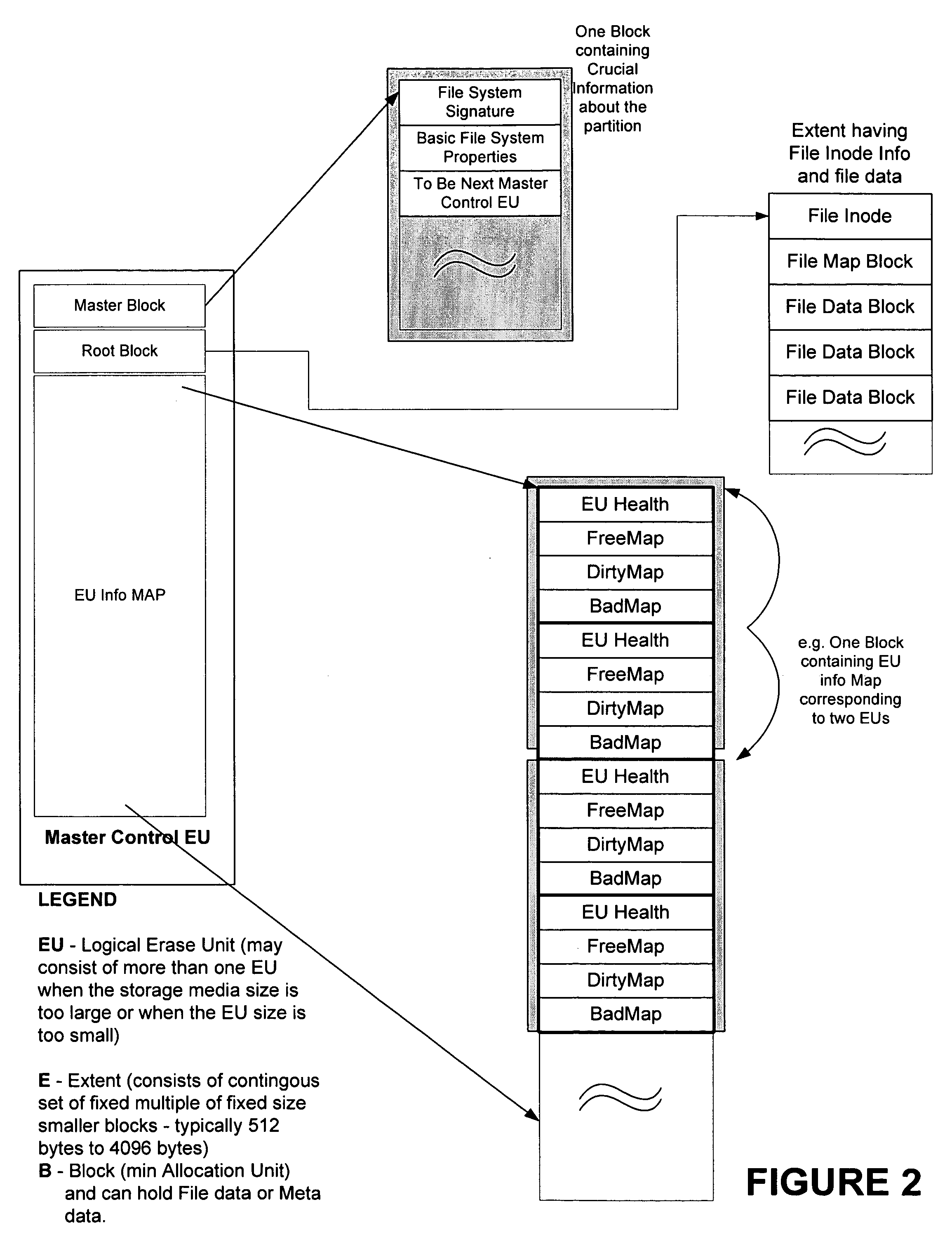Effective wear-leveling and concurrent reclamation method for embedded linear flash file systems
a linear flash file system and wear leveling technology, applied in the field of reclamation of memories, can solve the problems of flash memory being erased, expensive, subject to breakdown, old data on a hard disk can simply be overwritten,
- Summary
- Abstract
- Description
- Claims
- Application Information
AI Technical Summary
Benefits of technology
Problems solved by technology
Method used
Image
Examples
Embodiment Construction
[0021]FIG. 1 shows an embedded system 10 which can be a computer, a personal digital assistant, a telephone, a printer, etc. The embedded system 10 includes a processor 12 that interacts with a flash memory 14 and a RAM 16 to implement the functions provided by the embedded system 10.
[0022]Additionally, the embedded system 10 includes an input device 18 and an output device 20. The input device 18 may be a keyboard, a keypad, a mouse or other pointer device, a touch screen, and / or any other device suitable for use by a user to provide input to the embedded system 10. The output device 20 may be a printer, a display, and / or any other device suitable for providing output information to the user of the embedded system 10.
[0023]A number of definitions are useful to understand at the outset and can be referred to as the present invention is described below.
[0024]Block—A linear flash storage device such as the flash memory 14 typically contains a plurality of Erase Units. An Erase Unit is...
PUM
 Login to View More
Login to View More Abstract
Description
Claims
Application Information
 Login to View More
Login to View More - R&D
- Intellectual Property
- Life Sciences
- Materials
- Tech Scout
- Unparalleled Data Quality
- Higher Quality Content
- 60% Fewer Hallucinations
Browse by: Latest US Patents, China's latest patents, Technical Efficacy Thesaurus, Application Domain, Technology Topic, Popular Technical Reports.
© 2025 PatSnap. All rights reserved.Legal|Privacy policy|Modern Slavery Act Transparency Statement|Sitemap|About US| Contact US: help@patsnap.com



